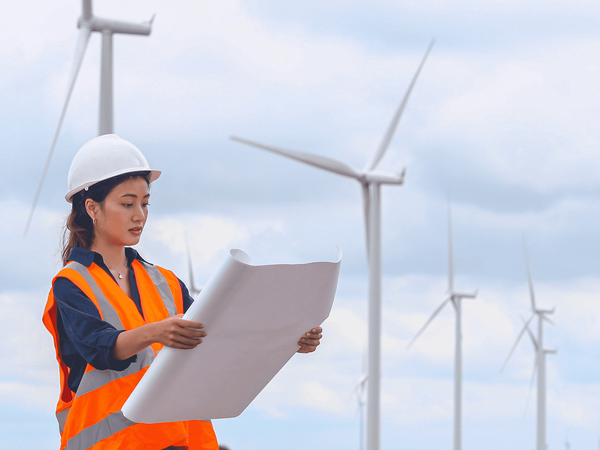Carbon Offsetting: controversial solution for climate change

Carbon offsetting has become a “go-to solution” to compensate for human-induced carbon emissions. However, critics have questioned the scheme's transparency and reliability.
A carbon offset can be understood as math— the credit (tCO2e) that an emitter can purchase by stopping the same amount of emission from happening somewhere else.
The act is supposed to match the exact carbon damage done in one place with carbon repair elsewhere through the removal, avoidance, or reduction of greenhouse gas emissions.
Ideally, the emitter is believed to be carbon-neutral when the quantity of carbon offset credits earned is equivalent to their carbon footprint.
This means, while emitting one tonne of carbon dioxide (CO2) into the atmosphere, the emitter must prevent a tonne of CO2 from entering the atmosphere elsewhere.
Under the Kyoto Protocol, the first Clean Development Mechanism (CDM) project was introduced in 2004 to allow carbon reduction projects in developing countries (although many offsetting projects also take place in developed countries) to earn certified emission reduction (CER) credits, which can be estimated to be one tonne of CO2. The CER is now popularly traded with industrialized countries to offset their regular emissions.
Some of the common offsetting projects are planting trees and investing in renewable energy projects. That means, if you have to fly around the world, you could plant some trees or pay someone to do it for you somewhere or make a donation to campaigning work with an environmental organization.
Many big companies, such as Amazon, Stripe, Alphabet, and Shopify are investing millions of dollars in the process of carbon offsetting schemes.
Positively, many see this as a way for the industrialized nations to pay developing nations to help them reduce overall global emissions on their behalf. However, the scheme also attracts enormous criticism regularly from many environmentalists.
One is NOT equal to one
The main criticism leveled at carbon offsetting is that it could undermine the real problem by giving people the luxury of contributing to something else, which may not be equally weighted.
There is no forced legislation to participate in carbon offsetting so in many cases, it could be easily ignored.
The benefits of carbon offsetting may also be hard to quantify— if you pay to plant trees, they take decades to grow until they can work optimally to remove CO2 from the atmosphere.
It'll be a long time before these trees make any positive impact on the problems we are causing today. In this case, it's hard to quantify one-to-one, which raises many eyebrows and questions if the scheme really works or if it's just a quiet getaway for heavy emitters. In a way, carbon offsetting could be a deliberate greenwashing.
Some carbon offset projects
- Tropical Mix Land Restoration is a Panamanian project to offset carbon emissions by restoring a mixed tropical forest on 13,385 acres with mainly native tree species. The motivation for this endeavor came from the fact that Panama has been losing 1% of its forest, every year. Several small-scale farms that are all operated utilizing the same forestry management plan are split up among the project zones. The initiative guarantees biodiversity protection, ecological restoration, and chances for residents to live sustainably. Over the course of the 30-year initiative, approximately 0.11 million teqCO2 have been neutralized.
- Bokhol Plant, a well-liked renewable offset project in Senegal, was the country's first solar photovoltaic (PV) installation and one of the biggest in West Africa, offering access to renewable energy to 160,000 people. The project's goal is to run and maintain a 20 MW photovoltaic power-producing facility in the northern Senegalese commune of Bokhol. The 40-hectare site for the power plant will house poly-crystalline solar modules. Additionally, it creates jobs for Senegalese citizens and guarantees that the proceeds from the sale of carbon credits go toward enhancing living standards in the community.
- Vietnam Biogas programme is an excellent example of a waste-to-energy project that frequently entails the capture of methane and its conversion into power. With funding from the Netherlands, SNV established the Vietnam Biogas Programme in 2003 to utilize biogas technologies and create a sustainable biogas industry in Vietnam. The main activities include teaching biogas masons to build different types of domestic bio-digesters, providing training to government technicians, promoting the advantages of biogas technology through mass media, and conducting research and development. The Vietnam Biogas Program successfully registered with the Voluntary Gold Standard and reduced approximately 800,000 tonnes of CO2 equivalent year till March 2017, since the beginning. Between 2013 and 2015, it received 1,290,876 carbon credits under the Gold Standard Voluntary Emission Reductions.
- Godawari Green Energy Solar Thermal Power is a massive solar thermal power facility, located in North India. With the help of parabolic trough technology, the 50 MW solar thermal plant produces almost 119,000 MWh of renewable energy for the Combined Regional Grid each year, further redistributing India's electrical mix away from fossil fuels. In addition to replacing fossil fuels with clean electricity to cut emissions, the project's backer pledges 2% of CER sales to community welfare and sustainable development initiatives. The initiative promotes additional investment in the renewables sector while also transferring cutting-edge, environmentally friendly thermal solar power-producing technology to India.
Problem could be a business model
To sustain in today's fast-changing markets, companies have to detect new market opportunities on time and must change with the needs.
However, companies sometimes find it hard to exactly position themselves in the middle point between profit and social responsibility.
Especially the big ones are not easily open to changes because the hierarchy is so big and complicated, and it takes an enormous amount of time to retrofit what is currently profitable— to add a bit of social and environmental responsibilities. This is why many companies are caught in the dreadful stamp of greenwashing.
So many businesses find a compromising solution of keep doing what they do and offset it with something else. Instead of stopping or slowing down their environmental impact, they pay money toward green schemes that seek to compensate for the damage they have done elsewhere. As cool as it sounds, the concept also attracts a lot of controversies.
“Your first move should always be to reduce your own emissions... But before you resign yourself to moving to a cave, know that high-quality carbon offsets are available to eliminate the last traces of your carbon footprint.”- Brian Palmer, NRDC.
In theory, carbon offsetting could make a difference in helping the world to tackle global warming, as long as the offsets are funding genuinely beneficial, long-lasting environmental projects that would not have happened otherwise.
However, environmental groups generally urge people to focus on reducing emissions first and then only consider offsetting emissions as a secondary option.
For example, try to reduce the number of flights and take trains instead, improve energy efficiency with low-energy lamps or better heat insulation, and invest in renewable energies.
Fly only if you cannot avoid it at no cost, but you should offset only through an approved offsetting scheme that meets the CDM Gold Standard.
Summary
- Carbon offsetting is matching the carbon damage done in one place with carbon repair elsewhere
- The majority of the carbon offsetting takes place in developing countries
- Planting trees and investing in renewable energy projects are the popular offsetting projects
- The scheme is regularly criticized by the environmentalists



